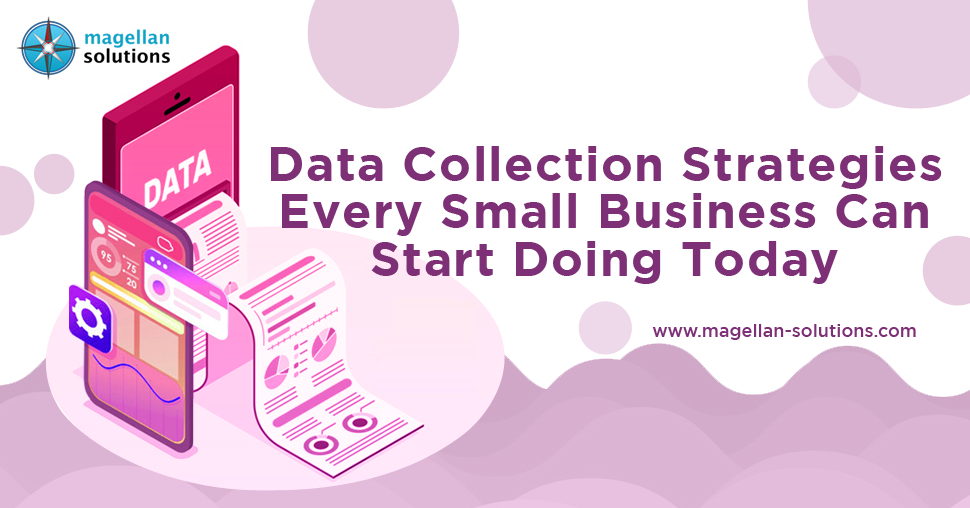Schedule a call with our outsourcing expert now and get a precise quotation that meets your requirements. Don't wait - get started today!
Playing a pivotal role in your marketing method are the data collection strategies. Without it, you’re missing opportunities to better understand your customers. The research revealed that many businesses don’t use data the right way. But the irony is that data collection is present in day-to-day business activities.
When your customer pays, and you keep a payment record, that is data collection. When you pay your employees and you keep your payroll records, that is data collection. In other words, some business owners collect data without their knowledge, but what keeps them vulnerable to bad data? It’s straightforward — the wrong choice of data collection strategies.
Having the wrong strategy of collecting data is like running in full circles. Aside from yielding useless data, you’re generating information that has no value for your data management system. To guard you against poor data collection, we’ve put together some of the data collection strategies your business must know.
Types of Data Collection Strategies
We all can agree that high-quality data is a result of good data collection. Choosing the right data collection strategy should be made cautiously as it can either make or break you. These methods include tools and practices to guide you towards obtaining high-quality data, from the easiest to hardest:
Social media monitoring
Look into Facebook, Google, or even Yelp reviews. Social media is another important tool to see exactly how customers perceive and interact with your brand. Gathering social media data such as the number of likes and shares helps you measure customer engagement. Companies like Spotify and Uber record social media data to provide their customers with personalized content and services. For this, many businesses now allow social login on their website to optimize social media content.
However, social data is being generated only by people with smartphones. People who have less of a social media presence are not being captured. Having said that, social data doesn’t mean it’s at all representative of society. To avoid misguided conclusions, you may work with experts in mitigating the skewed demographics of social media data.
Review of existing records
This refers to examining existing documents and records of an organization or agency. Data obtained from this method may include attendance records, meeting minutes, and financial records. This strategy is useful in some cases. For example, you want to measure consistency in attendance, you can do it by looking for sign-in logs.
Reviewing documents and records is the most accessible data collection method that won’t take minutes to do. It’s because you’re accessing data that has already been completed. However, certain documents may require authorized permission. For this, you may need to work with legal experts to access these documents for your data collection.
Review of Publication
This data collection strategy is referred to as secondary data collection. It involves obtaining data from previously published articles available in the public domain. Some of the secondary data sources include newspapers, magazines, online published papers, and articles. This strategy is handy when comparing data that the researcher collects.
Since it’s secondary data, you don’t need to invest more time or money. However, not all secondary data can answer all your specific research questions. Although there is a breadth of data available in public, you need to do intensive research anyway.
Customer Feedback
Regardless of the industry, everyone benefits from collecting customer feedback. You may employ this strategy in your physical store by having a ‘suggestion box’ at your checkout. This box can create the foundation of successful and effective customer suggestion programs. You may also prompt your customer to drop their comments by offering incentives such as monthly draws or gifts.
When you gather the right suggestion, you’ll know what to market next for your customers. But the problem with this strategy is that most of your customers are not all represented. Sometimes, the one who complains is the one who is only affected. In this case, you can track related complaints to see which problem in your product greatly affects your general customer.
Surveys
This tool is widely used in obtaining data from a population under study. Through questionnaires, survey data is gathered. These questionnaires are administered via telephone, online, mail, focus groups, and in-person. You can do it for free using Google Forms or any paid survey website. Essentially, it consists of a series of questions designed to collect demographics and significant information.
Many businesses include surveys in their data collection methods for many reasons. This is to learn about their customers’ expectations, perceptions, and areas to improve their product or service. With well-designed survey questionnaires, it’s easy to determine the level of satisfaction of customers. At the same time, it’s less complicated to gain valuable insight into what customers think of a brand.
Survey questionnaires can yield precise results. This is because it provides uniform definitions to all respondents, which results in greater precision in terms of measuring the data. However, good questions are of utmost importance in this strategy. With a bad survey question, you may suffer from dropouts and non-responses.
Interviews
This is one of the most effective qualitative data collection methods that rely on intensive engagement with respondents. Usually, it is conducted through telephone or in-person to get in-depth responses from the interviewees. With an in-person interview, you can minimize nonresponse and maximize the response rate. Also, you can probe for explanations of responses for your qualitative research.
In-person interviews allow you to have a personal conversation with your respondent. In this set-up, you can capture non-verbal cues that can give you emotional insights into your study. Also, it prompts respondents to open up and share emotions with the interviewer. With a personal interaction, the interviewer can ask further questions and optimize the quality of data.
However, conducting interviews can be time-consuming. This is true if you need an expert for your research study. When this happens, it’s safe to have a service provider to help you in this undertaking.
Transactional data tracking
It’s a fact that transactional data is vital to everyone within eCommerce. This is due to the importance of knowing customers and their buying patterns. In this strategy, you can obtain data such as customers’ purchase, mode of payment, and even process of delivery. You can support both your inventory and marketing decisions by tracking these data.
In the online set-up, it’s challenging to obtain customer data due to their varying characteristics. This also adds to the struggle of targeting customers effectively at a lower cost. Thus, it’s crucial to record purchase history to identify your most valuable customers. Because this type of customer can give you the right data that can drive greater value for your business.
Subscription and registration data
You can make the most of your email marketing campaigns by collecting data from subscription and registration. This data allows you to know more about your customers and give you opportunities to optimize your communication with them. To collect subscriber data, businesses offer giveaways such as e-books and case studies in exchange for signing up. This strategy can boost your mailing list and allow you to send targeted campaigns to your customers.
However, keep in mind that most of your customers will hate to receive unrequested offers. To ensure they don’t hit the unsubscribe button, make this strategy subtle for them and useful for yourself.
Website and app tracking
Your owned channels like websites and apps can also collect customer data. This strategy of tracking provides you data on how your site visitors behave once on your website or app. You can obtain data including your visitors’ age, location, and even how much time they spent on your website. It’s important to note that by obtaining all these data, you’ll know how to improve their user experience.
The downside of this strategy lies in the limitation of data collection. This is because obtained data from this strategy is collected by your hosting provider only. If you want advanced-level data tracking and reporting, you can make use of online tracking software.
Digital Marketing Analytics
Through this strategy, you will know how your website is performing. Data such as clicks per visit and time spent can help you determine if your website is connecting with your audience. The more time a visitor spends on your website, the more likely they will convert into a lead. Having said that, you need to observe these essential metrics to develop ways of making your website efforts more productive.
Using digital marketing analytics could be the hardest data collection strategy due to disconnected data environments. To monitor your data-processing efforts, you need to implement tools and platforms such as Google Analytics, Social Media tools, SEO tools, and CRM platforms. But the challenge is that most of these technologies are deployed in isolation. Hence, you need the right people in place who can help you integrate data across systems.
Finding the Best Data Collection Strategy
There is no single data collection strategy that can capture big data alone. If you want to capture a large amount of data, you’ll need a mixed-method approach of the above strategies. But the question is, which among those data collection strategies can complement to generate both quantitative and qualitative data? Only experts can answer that question!
Outsourcing the help of professionals in data management is a great way of improving your data collection efforts. With a positive reputation in the industry, they can offer precision in your data for your data collection strategies. They also have the best practices and technologies to make your data collection secured and updated. Moreover, they can provide customized solutions to meet your business needs and requirements.
Do you need help in collecting all the data your business demands? Fill out the form below to get a free consultation.














